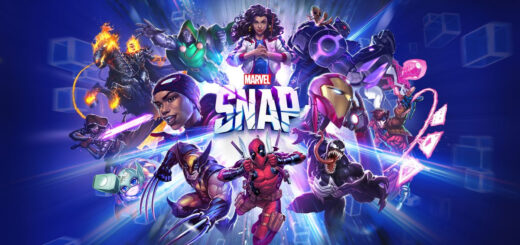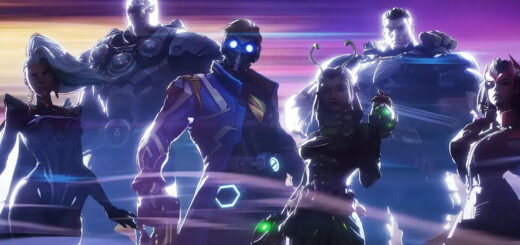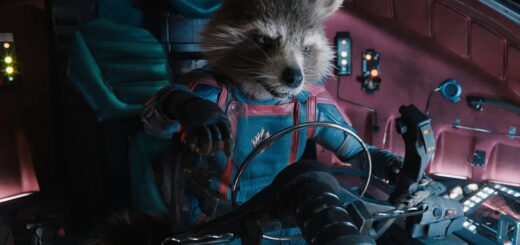Marvel Ultimate Alliance: A Comprehensive Look at Marvel’s Team-Based Action RPG Series

Marvel Ultimate Alliance has been a cornerstone franchise for Marvel fans who love video games, offering players the chance to assemble teams of their favorite superheroes and battle iconic villains. Spanning three main games released over more than a decade, the series has evolved while maintaining its core appeal of cooperative gameplay and deep Marvel lore.
The Original: Marvel Ultimate Alliance (2006)
The first entry in the series launched in 2006, developed by Raven Software and published by Activision. It was released across multiple platforms including PlayStation 2, Xbox 360, PC, and several others, making it widely accessible to gamers.
Gameplay
Marvel Ultimate Alliance established the formula that would define the series: players select a team of four heroes from a diverse roster and control them from an isometric perspective, battling through levels filled with enemies and bosses. Each character has unique abilities and attacks, with special moves that consume energy.
According to StrategyWiki, one of the game’s defining features was its team bonus system. Players could assemble specific combinations of heroes to receive stat bonuses:
- Fantastic Four team (Mr. Fantastic, Invisible Woman, Human Torch, Thing)
- Avengers team (Captain America, Iron Man, Thor, etc.)
- X-Men team (Wolverine, Storm, etc.)
- And many others based on comic relationships
The game featured Xtreme attacks, which Marvel: Ultimate Alliance Wiki describes as “the most powerful move your hero will have.” These required a full momentum bar to execute, giving players powerful options for dealing with tough enemies.
Story
The plot centered around Doctor Doom and his Masters of Evil launching an attack on the S.H.I.E.L.D. Helicarrier. Nick Fury assembles a team of heroes to counter this threat, which soon escalates into a globe-spanning adventure. Players visit diverse locations including Atlantis, Murderworld, Asgard, and eventually face off against Doom himself after he steals Odin’s power.
The game featured multiple endings depending on players’ choices during specific side missions, adding replay value and consequences to player decisions.
Characters
The initial roster included over 20 playable characters, with many more appearing as NPCs. Staples like Spider-Man, Wolverine, Captain America, and Iron Man were joined by less mainstream heroes like Deadpool and Moon Knight.
DLC later added more playable characters on certain platforms, including villains like Doctor Doom and Magneto who could be recruited to the player’s team.
The Sequel: Marvel Ultimate Alliance 2 (2009)
Released three years later, Marvel Ultimate Alliance 2 was developed by Vicarious Visions and other studios, published again by Activision. The game maintained the core formula while introducing new mechanics and a story based on major Marvel comic events.
Gameplay
The sequel refined the action RPG gameplay of its predecessor while adding a significant new feature: fusion attacks. These allowed two heroes to combine their powers for devastating effects. For example, Captain America could reflect Storm’s lightning with his shield to create a powerful area attack.
Character progression remained similar, with players leveling up heroes to unlock new abilities and improve stats. The game maintained the team-based approach but simplified some RPG elements compared to the original.
Story
Marvel Ultimate Alliance 2 drew inspiration from two major comic storylines: Secret War and Civil War. The game begins with Nick Fury leading an unsanctioned mission to Latveria, setting in motion events that eventually lead to the Stamford Incident, where hundreds of civilians are killed during a superhero confrontation.
This tragedy prompts the government to pass the Superhuman Registration Act, forcing heroes to register with the government or become outlaws. Players must choose a side in this conflict:
- Pro-Registration (led by Iron Man)
- Anti-Registration (led by Captain America)
This choice affects which missions players undertake and which heroes they fight against. The storyline eventually reveals a greater threat: nanite-controlled villains who form “The Fold,” forcing the heroes to reunite against this common enemy.
Characters
According to Marvel: Ultimate Alliance 2 Wiki, the roster included a solid mix of returning heroes and newcomers:
- Mainstays like Captain America, Iron Man, and Wolverine
- New additions like Green Goblin, Penance, and Songbird
- DLC characters including Magneto, Psylocke, and Black Panther
The character selection reflected the Civil War storyline, with heroes representing both sides of the conflict.
The Revival: Marvel Ultimate Alliance 3: The Black Order (2019)
After a decade-long hiatus, the series returned with Marvel Ultimate Alliance 3: The Black Order, developed by Team Ninja and published exclusively for Nintendo Switch by Nintendo, who had acquired the publishing rights.
Gameplay
While maintaining the isometric action RPG style, Marvel Ultimate Alliance 3 featured a more vibrant, comic-book visual style. The core gameplay remained familiar: four-player cooperative action with each hero having unique abilities.
The game introduced the “Synergy” system as an evolution of the fusion attacks from the previous entry. Characters could combine their abilities for powerful effects, encouraging strategic team building. Additionally, ISO-8 crystals could be equipped to customize character stats and abilities.
Story
The plot revolves around Thanos and his Black Order seeking the six Infinity Stones, clearly inspired by the success of the Marvel Cinematic Universe’s Avengers: Infinity War film. The Guardians of the Galaxy discover Thanos’ plan and scatter the Infinity Stones across Earth to prevent him from acquiring them.
This leads to a global hunt for the stones, with heroes confronting various threats including the Sinister Six, Ultron, the Brotherhood of Mutants, Dormammu, and eventually Thanos himself. The campaign takes players through iconic Marvel locations like the Raft prison, Avengers Tower, Xavier Institute, and Asgard.
Characters
Marvel Ultimate Alliance 3 boasted the largest roster in the series, with over 50 playable characters when including DLC. The base game featured 36 heroes, spanning the breadth of the Marvel universe:
- Avengers members (Captain America, Iron Man, Thor, etc.)
- X-Men (Wolverine, Storm, Psylocke, etc.)
- Guardians of the Galaxy (Star-Lord, Gamora, Rocket & Groot, etc.)
- Street-level heroes (Daredevil, Luke Cage, Iron Fist, etc.)
- And many more from various Marvel teams
The Expansion Pass added characters from the Marvel Knights, X-Men, and Fantastic Four, further expanding the playable roster.
Gameplay Evolution Across the Series
Throughout its three main entries, Marvel Ultimate Alliance maintained certain core elements while evolving in response to gaming trends and player feedback.
Cooperative Multiplayer
All three games emphasize cooperative play, allowing up to four players to join forces either locally or online (with some limitations depending on platform). This social element has been central to the series’ appeal, letting friends team up as their favorite heroes.
In Marvel Ultimate Alliance 3, local multiplayer could be played with up to four Nintendo Switch consoles, each player controlling their own hero on their own screen, or with all players sharing a single screen.
Character Progression
The RPG elements have evolved throughout the series:
- The original game featured the most extensive character customization, with players allocating points to various stats and abilities
- Marvel Ultimate Alliance 2 streamlined this system, focusing more on preset character builds
- Marvel Ultimate Alliance 3 introduced the Alliance Enhancement grid, allowing players to improve all heroes simultaneously, alongside character-specific skill trees
Team Bonuses
Team composition has always mattered in the series. The original game offered bonuses for assembling teams based on comic affiliations, while subsequent entries refined this system.
According to Marvel: Ultimate Alliance Wiki, Marvel Ultimate Alliance featured team bonuses such as:
- Agents of SHIELD: +5 All Resistances (Captain America, Nick Fury, Spider-Woman, Wolverine)
- Agile Warriors: 10% Reduced Energy Cost (Black Panther, Deadpool, Elektra, Daredevil, Nightcrawler, Sabretooth, Spider-Man)
- Air Force: +15% Max Health (Human Torch, Ms. Marvel, Storm, Thor)
These mechanics encouraged players to experiment with different team compositions rather than simply picking their four favorite heroes.
Technical Aspects and Availability
The Marvel Ultimate Alliance games have appeared on various platforms throughout the years, making them accessible to different generations of gamers.
Marvel Ultimate Alliance (2006)
Originally released for:
- PlayStation 2
- PlayStation 3
- Xbox
- Xbox 360
- PC
- Wii
- PlayStation Portable
- Game Boy Advance
In 2016, the game was re-released for PlayStation 4, Xbox One, and PC with updated graphics, though these versions were later delisted from digital storefronts.
Marvel Ultimate Alliance 2 (2009)
Released for:
- PlayStation 2
- PlayStation 3
- Xbox 360
- Nintendo DS
- PlayStation Portable
- Wii
Like the original, it received PlayStation 4, Xbox One, and PC ports in 2016 which were subsequently removed from digital stores.
Marvel Ultimate Alliance 3 (2019)
Exclusive to Nintendo Switch as part of Nintendo’s publishing deal with Marvel Games.
Cheats and Secrets
According to Gamespot Xbox 360, the original Marvel Ultimate Alliance had various cheat codes, particularly for the Xbox 360 version. These codes could unlock characters or enable special features, though using most codes would disable achievement unlocks.
Each game in the series contained various secrets and Easter eggs for Marvel fans, including:
- Stan Lee’s cameo in Marvel Ultimate Alliance 2 as Senator Lieber
- References to obscure Marvel comics storylines
- Hidden unlockable costumes referencing different eras of Marvel comics
Impact and Legacy
The Marvel Ultimate Alliance series has maintained a special place in the hearts of Marvel gaming fans. It successfully translated the appeal of Marvel comics into an accessible gaming format that emphasized the team-up nature of superhero stories.
While not always achieving critical acclaim on the level of single-hero games like Spider-Man PS4, the series has been commercially successful and has influenced other superhero team games.
The wait between Marvel Ultimate Alliance 2 and 3 (a full decade) demonstrated the enduring appeal of the franchise, with fans continuing to request a revival even after years of dormancy.
FAQ
How to play Marvel Ultimate Alliance?
Marvel Ultimate Alliance can be played on the original platforms it was released for (PS2, Xbox 360, etc.) or through the 2016 remasters on PS4, Xbox One, and PC (though these are no longer available for digital purchase). Physical copies of all versions can still be found through secondhand markets. The gameplay involves selecting a team of four heroes and controlling them through isometric levels, using basic attacks, special moves, and team-up abilities to defeat enemies.
Can you play Marvel Ultimate Alliance on PS5?
You cannot play Marvel Ultimate Alliance directly on PS5. However, if you own the PS4 remaster that was briefly available digitally, you may be able to download and play it on PS5 through backward compatibility. Physical PS2/PS3 copies cannot be played on PS5.
Can you play Marvel Ultimate Alliance on Xbox Series X?
You cannot play Marvel Ultimate Alliance natively on Xbox Series X. If you purchased the Xbox One remaster before it was delisted, you may be able to download and play it through backward compatibility. Original Xbox 360 discs may also work through backward compatibility, but this varies by title.
How to play 2 player in Marvel Ultimate Alliance 3?
To play 2-player in Marvel Ultimate Alliance 3 on Nintendo Switch:
- From the main menu, select “Play Co-op”
- Choose either “Online Play” to play with someone over the internet, or “Local Play” for same-room multiplayer
- For local play with one Switch, have two controllers connected (Joy-Cons count as independent controllers)
- Each player selects their character from the hero selection screen
- During gameplay, each player controls their own hero
Alternatively, you can play with up to four Nintendo Switch consoles locally, with each player having their own screen.
Will there be a Marvel Ultimate Alliance 4?
As of 2025, there has been no official announcement regarding Marvel Ultimate Alliance 4. After the exclusive Nintendo Switch release of Marvel Ultimate Alliance 3 in 2019, the series has been quiet. With Marvel’s gaming strategy focusing on standalone titles like Spider-Man and Wolverine by Insomniac Games, it’s unclear if or when the Ultimate Alliance series might return. However, given the 10-year gap between the second and third games, fans should never rule out the possibility of another revival in the future.

























